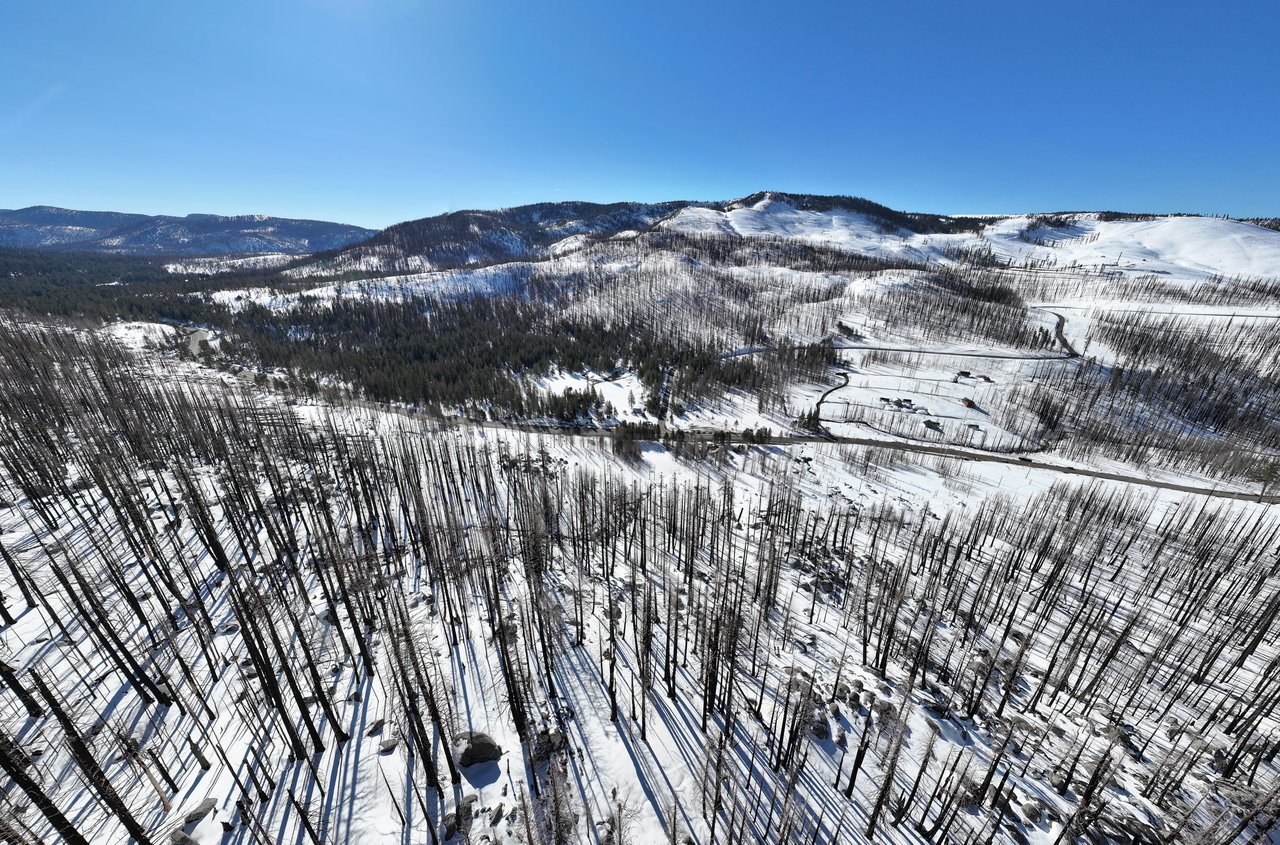SACRAMENTO, Calif. (CN) — California’s water resources look promising thanks to a string of cold, wet storms since January, but the state's leaders are eyeing how significant the payout from those storms will be for future years.
State officials and experts from the University of California, Berkeley’s Central Sierra Snow Laboratory say the Golden State’s water and snow outlook is looking good this spring, despite a dry start to the water year. The milestone snowpack survey of the year, conducted Tuesday at Phillips Station in El Dorado County, found a snowpack measuring 64 inches and a snow water equivalent — water contained in the snowpack — of 27.5 inches.

That is 113% of average for the location, a great sign for the year, the state Department of Water Resources said. Its readings from 130 stations throughout the state show the statewide snow water equivalent is 28.6 inches, or 110% of the April 1 average.
The survey coincided with a new report Monday from the Central Sierra Snow Laboratory. Lead scientist Andrew Schwartz said in a briefing that in just the last week, about 18 inches of snow helped beef up the snowpack.
“This has been roughly an average March for us — but it has helped us make up for lost ground,” Schwartz said. “It means that we can carry these additional reservoir storages forward in time to help us prepare for a moment in time when we might have a shortfall.”

The experts gathered at Phillips Station with Governor Gavin Newsom on Tuesday agreed, saying that it was a relief to need snowshoes due to the sheer amount of powder recently dumped on the area. That snow will soon melt into the American River and flow into the Sacramento River, eventually watering counties across the state.
However, Department of Water Resources director Karla Nemeth said it remains to be seen whether the good news of the day translates into strong results for the state’s water reserves.
“This water year shows once again how our climate is shifting, and how we can swing from dry to wet conditions within a season,” Nemeth said. “These swings make it crucial to maintain conservation while managing the runoff. Variable climate conditions could result in less water runoff into our reservoirs.”

David Rizzardo, manager of the department’s hydrology sector, said the statewide average is less than half of the extraordinary 245% above average measured across the state in 2023. However, each Sierra range is measuring at 100% or higher, including the southern Sierra — which is significant following years spent in crippling drought.
All state watersheds have significantly improved in water storage since Feb. 20, with all sitting at 90% or higher. The State Water Project also increased its forecast allocation of water supplies to 30%.
But the state continues to reel from years spent in historic drought, having lost healthy soil to extreme heat and dryness and significant forest canopy to major wildfires.

“California has had two years of relatively positive water conditions, but that is no reason to let our guard down now,” said state climatologist Michael Anderson. “With three record-setting multiyear droughts in the last 15 years and warmer temperatures, a well above average snowpack is needed to reach average runoff. The wild swings from dry to wet that make up today’s water years make it important to maintain conservation while managing the runoff we do receive.”
Newsom presented an updated California Water Plan on Tuesday, including a Water Resilience Portfolio with 142 state actions like building new infrastructure to store and move water.
“The water plans and strategies we’re implementing are each targeted components of our overall effort to deliver clean water to Californians by capturing, storing, and conserving more water throughout the state,” he said. “These extremes are a new reality, that requires a new approach and new sophistication.
Schwartz said another storm system could bring up to 11 inches of snow Thursday, but the rest of April looks drier and warmer than usual.
Anderson agreed current models don't indicate more rainstorms arriving ahead of the snowmelt, which typically begins in May. And a La Niña event — when Pacific Ocean temperatures cool, affecting worldwide tropical rainfall patterns — is also likely this year, which could bring weather extremes, he said.
Runoff that could lead to flooding is not expected to be as heavy as during the previous winter. Rizzardo said that the three watersheds that supply the phantom Tulare Lake — which re-emerged during last year's deluge — and nearby farm production should capture the coming melt.
The Sierra snowpack supplies about 30% of California’s water needs for 27 million residents. In 2023, state agencies greenlit the diversion of more than 1.2 million acre-feet of water for groundwater recharge under Newsom’s executive orders.
Subscribe to Closing Arguments
Sign up for new weekly newsletter Closing Arguments to get the latest about ongoing trials, major litigation and hot cases and rulings in courthouses around the U.S. and the world.









